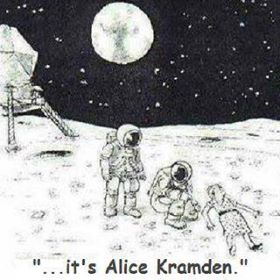
Image: NASA’s Goddard Space Flight Center
Posted on 03/17/2018 12:40:37 PM PDT by Swordmaker

The moon is under constant bombardment by meteorites and asteroids that can leave massive craters on its surface. The Aitken basin, the largest impact crater on the lunar surface, has a diameter equivalent to the distance from London to Athens, Greece. But not all craters are so noticeable — most are relatively insignificant.
Thousands of previously unknown craters have been spotted on the moon thanks to an artificial intelligence program designed by researchers at the University of Toronto.
“We created an A.I. powered method that autocratically identifies craters on the surface of the moon, and possibly other bodies,” Mohamad Ali-Dib, a postdoctoral fellow in the Centre for Planetary Sciences who worked on the project, told Digital Trends. “It will allow scientists to find and measure craters down to scales smaller than ever, and on more solar system bodies than previously possible. In turn, this will allow us a deeper understanding of the history of the impactors that created the craters and hence the history of the solar system.”
Ali-Dib and his colleagues created a convolutional neural network — the same kind used to train self-driving cars — that could identify and count lunar craters. Though this has previously been attempted by other researchers, past examples have struggled when tasked with analyzing new patches of craters. The system developed by Ali-Dib and his team can both generalize from images of the moon and even spot craters on other bodies, such as Mercury.
In a paper that is currently under review in the journal Icarus, the researchers demonstrate that their A.I. performed twice as well as manual counting, spotting 6,000 previously unidentified craters.
Ali-Dib described how they trained the program: “As input, the model takes a digital elevation map of the moon. The convolutional neural network then transforms the input into a binary rings image, with zeros everywhere except ones at the craters rims. This is the output. Our post-processing pipeline then extracts the position and size of the craters from the output rings binary image.”
Crater size and distribution are the key features for scientists, who use this data to calculate the size and distribution of the objects that created these craters in the first place. Comparing this information to their models of the solar system gives them a better understanding of the history of our solar system.
Oh, lookie there! It’s Freedumb!
Your suggestion is null and void.
We’re whalers on the Moon,
We carry a harpoon,
But there ain’t no whales,
So we tell tall tales,
And sing a merry tune!
I think I’ll come back in my next life to trash this place.
Wow, write a program to count rings, how very Tandy of you.
And call it Artificial Intelligence. IQ of 2?
And regardless of the size they all appear to be the same depth.
I didn’t mind when the AI started identifying new craters, but I became a little concerned when it started calculating how many dead bodies it could fit in each one.

It's already been done. Geneticists have analyzed mitochondrial DNA to count the total number of homo sapiens generations. They go back precisely 200,000 years, and no more.
In addition, we're the only primates who possess 46 chromosomes. All other primates have 48.
Something to keep you awake at night.
Could be ejecta from a single large impact event.
Rear Admiral Alan Bartlett Shepard Jr., of course.
I’d trust a real count vs an estimate, speaking of which:
Earth’s colossal crater count complete
By Eric HandJun. 26, 2015 , 4:15 PM
http://www.sciencemag.org/news/2015/06/earths-colossal-crater-count-complete
New Gravity Map Reveals Lumpy Earth
A model of Earth’s gravity field made with data from ESA’s GOCE satellite.
PUBLISHED April 7, 2011
https://news.nationalgeographic.com/news/2011/04/110406-new-map-earth-gravity-geoid-goce-esa-nasa-science.html
https://news.nationalgeographic.com/news/2011/04/110406-new-map-earth-gravity-geoid-goce-esa-nasa-science/
Coolest thing about the moon for me is that during a seismic test, crashing an object into the moon caused it to ring for hours.
Can you think of anything else as cool?
The Apollo 11 and 12 missions (and actually, all of them, I believe, incluidng 17) recorded the third stage impacts seismologically from Apollo 13 on. As the program continued, the Saturn V’s spec improved and the mass budget went up. /pedanticrantoff
https://www.space.com/31503-apollo-16-moon-rocket-crash-site-photo.html
Nice!
Wow, I was just speculating. The 200,000 years to arrive at Eve is based upon assumptions on mtDNA mutation rates, which could be 10-20 times higher, per this article:
http://citeseerx.ist.psu.edu/viewdoc/download?doi=10.1.1.541.4970&rep=rep1&type=pdf
“It’s already been done. Geneticists have analyzed mitochondrial DNA to count the total number of homo sapiens generations. They go back precisely 200,000 years, and no more.”
REAL bad hook....by God, that duffer.......
Big Hitter, The Lama!
Disclaimer: Opinions posted on Free Republic are those of the individual posters and do not necessarily represent the opinion of Free Republic or its management. All materials posted herein are protected by copyright law and the exemption for fair use of copyrighted works.